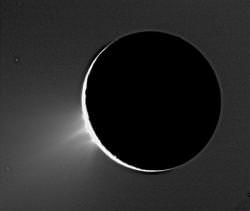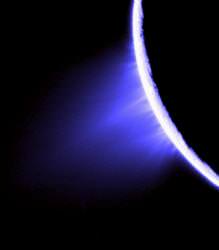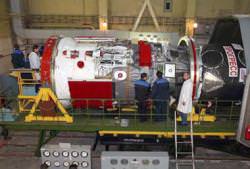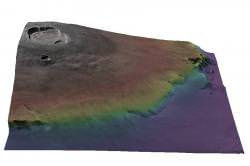Yesterday I blogged about how particles jetting from Enceladus find their way to Saturn’s A-Ring. Now there’s a new report that models how ice and vapour come pouring out of cracks on Enceladus’ surface in the first place.
Since Cassini first discovered jets of water ice blasting out of Saturn’s moon Enceladus, scientists have been trying to explain the process that could make this happen. The moon is very very cold; too far away to be warmed by the Sun.
Scientists now know that the jets are emanating from a series of cracks near Enceladus’ southern pole; these cracks have been dubbed “tiger stripes”. A team of German researchers, led by Juergen Schmidt of the University of Potsdam, have developed a computer model that describes what the bottom of those tiger stripes might look like.
According to Schmidt, they have to be at a temperature of 0 degrees Celsius. This is the triple point of water, where vapour, ice and liquid can all exist at the same time.
Water vapour and ice grains are blasted through funnels in the tiger stripes. The heavier grains rub against the sides of the holes and slow down.
This helps explain why ice particles coming out of Enceladus move at a slower velocity than the water vapour.
The process of tidal heating is probably keeping the interior of Enceladus warm. As it orbits around Saturn, the powerful gravitational force causes the tiny moon to flex back and forth. This creates heat within it. A more dramatic version of this process can be seen with Jupiter’s moon Io, which is heated to the point that volcanoes erupt across its surface.
The surface of Enceladus is -193 degrees Celsius, while the tiger stripes are -133 C. This means that the interior of the moon must be even warmer.
The researchers have published their work in this week’s issue of the journal Nature.
Original Source: Nature










